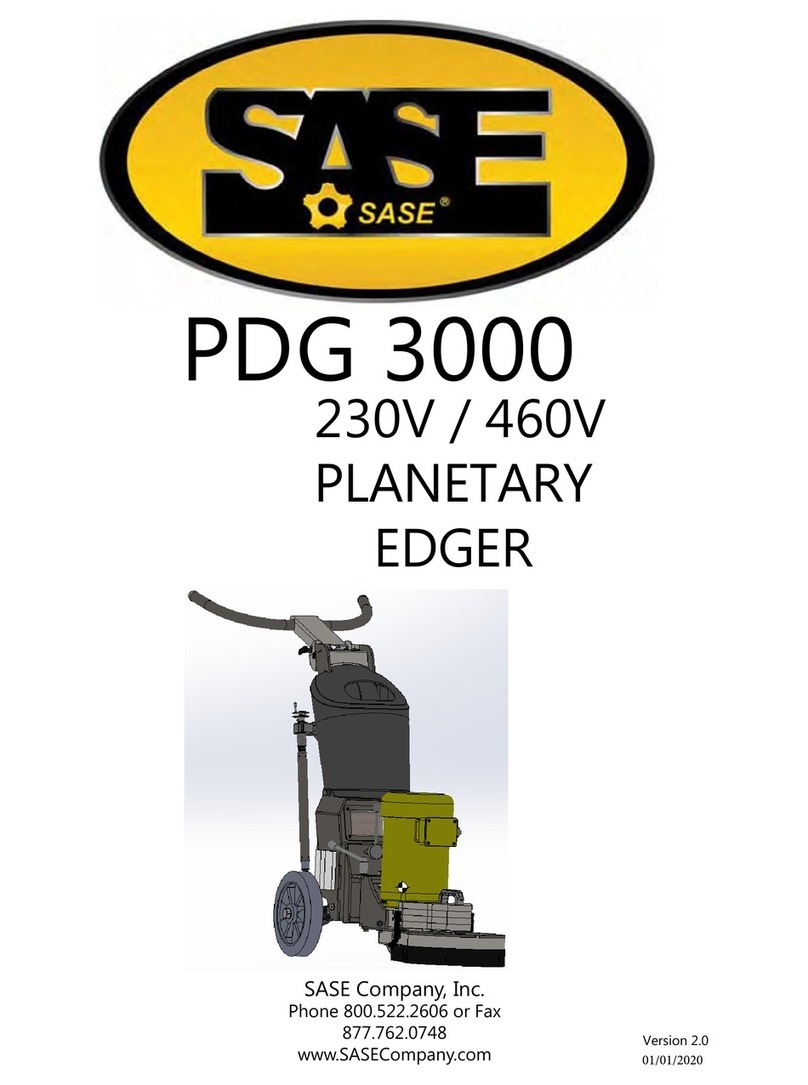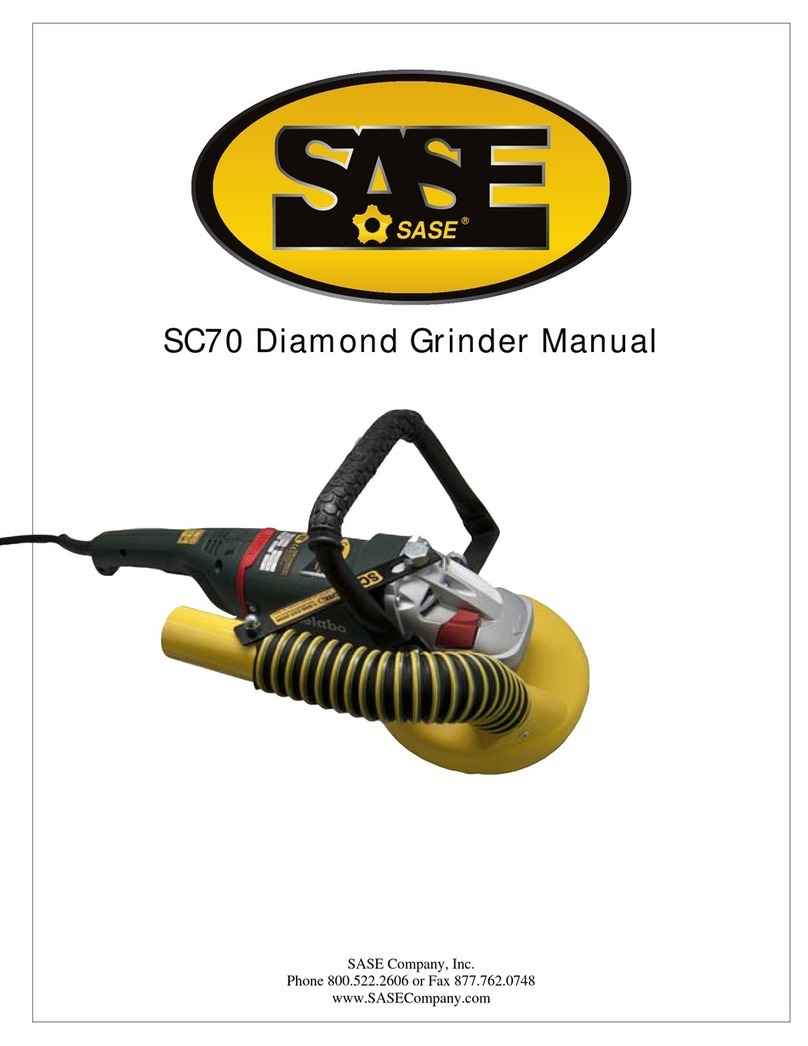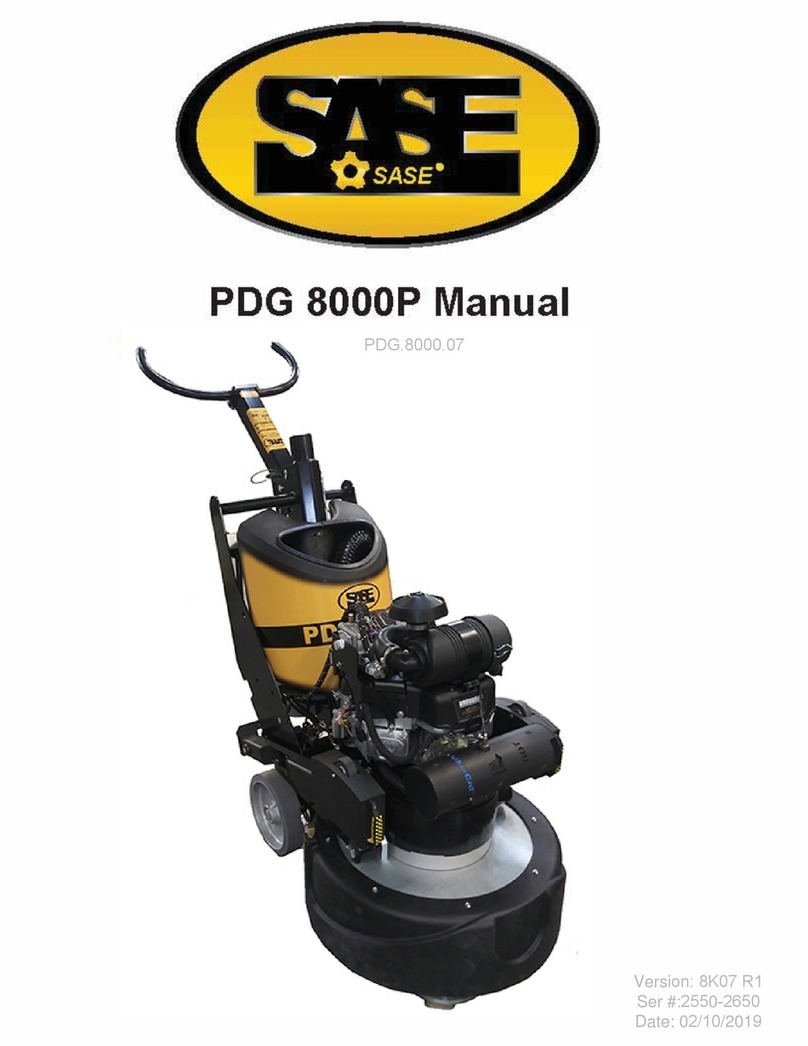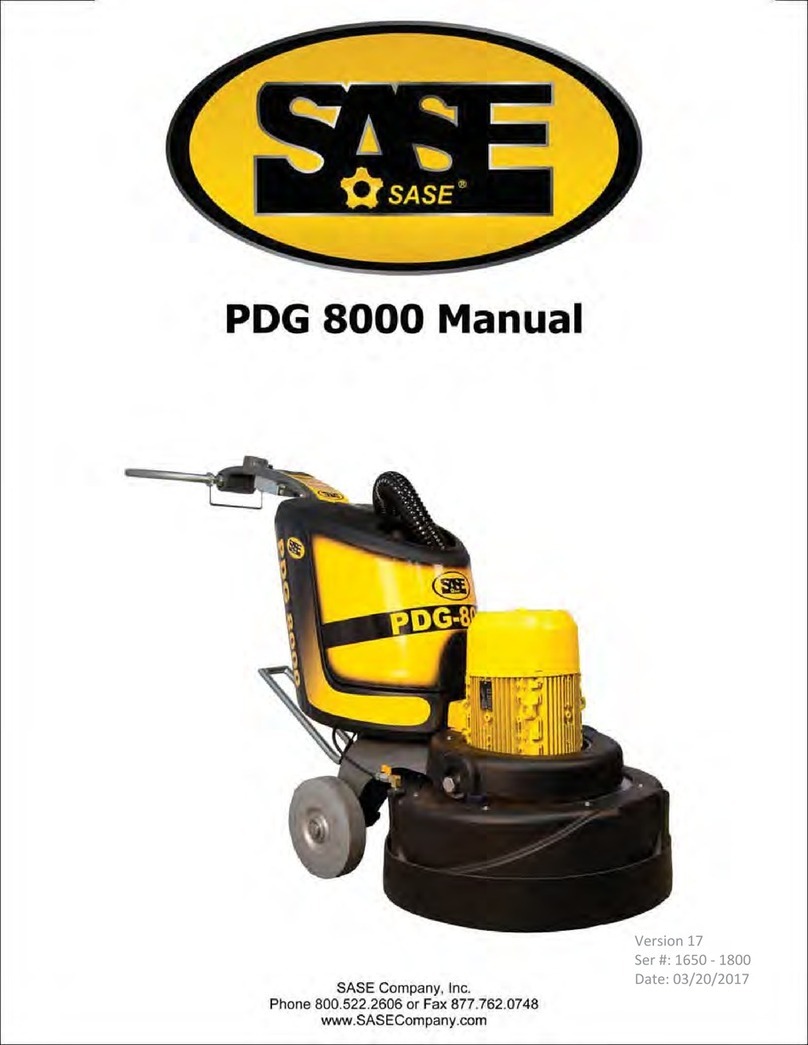
SAFETY WARNING: Operate in large open
ventilated areas only. Must not be run
indoors or enclosed areas.
Introduction
The SASE PLANETARY DIAMOND GRINDERS are designed for wet or
dry grinding of marble, terrazzo, granite and concrete. Their applications
range from rough grinding through to a polished finish.
It is extremely important all users be familiar with the contents of SASE
manuals before commencing operation of either machine. Failure to do so
may result in damage to machinery or expose operator to unnecessary
dangers.
IMPORTANT
Only staff that has received the necessary training, both practically and
theoretically concerning their usage should operate the machinery.
Hazards
While, this machine is easy to use and has been used safely for many years, there
are risks involved in operating any large propane machinery.
Toxic Emission Exposure
Fire Relate Incidents
Mechanical action of moving and hot machine parts
Toxic Emission Exposure
The major toxic gasses created when spent propane is exhausted are:
Carbon monoxide (CO) - Over exposure to carbon monoxide results in
brain damage, or death.
Oxides of nitrogen (NOx) –Can damage lung tissue, aggravates
respiratory diseases.
Hydrocarbons (HC) –Can damage lungs.
We have included a sensor to test the air around the machine to limit exposure
to toxic levels of emissions. Without proper ventilation, this sensor will shut
down the machine after 30 seconds of use.
Fire Relate Incidents
The fire related incidents are few, because of strict fire safety prevention laws,
regulations, devices, and practices. Some common causes of fire related hazards.
Over fill –If the tank is too full, and the pressure is vented indoors,
that gas can start a fire, or be trapped dangerously in a room.
Improper storage –The storage location must be safe from extreme
temperature, but also safe from theft, and tampering.
Uneducated users –The end user that does not understand the
danger of improper use can cause unthinkable damage.
Mechanical Action of Moving and Hot Machine Parts
Several parts of this machine are understood to be dangerous.
The front of the machine has a grill indicating it is “HOT”, this is an
understatement. The muffler can reach nearly 1000F Degrees after use, and air
venting from the motor side, can reach 800F to 1000F degrees as well.
The Grind Head has a rotation and a counter rotation, keep body parts clear of
the moving grinder head.
The handle is heavy. Failure to lock the handle in place can result in operator
injury.
During operation, the entire machine has a force of its own. If you lose control of
the machine, it will walk away without you. The operator has to maintain control
of the machine while it is on the ground. The machine moving freely can damage
finished floor sections, or wall sections. Not to mention anyone caught by the
grind head would be injured.
Preventative Maintenance
Preventing the hazard is the best case scenario. Preventative Maintenance (PM)
is the responsibility of the operator.
Check and clean air filter regularly
Check Oil and adjust level as needed
Keep a Log Book for all service done.
Check fuel cylinder for overfill before taking them into a building
Be SURE that adequate ventilation is in use.
Properly store propane fuel cylinders and machines.
Be aware of changes in operation, smell, noise, etc. while operating
Report to management ANY safety concerns.
Follow manufacturer recommendations for all motor maintenance.
Propane Cylinder
The cylinder used is classified as a DOT 4E240 cylinder. The service pressure the
cylinder is designed for is at 20 PSI. The cylinder has a pressure relief if it reaches
an excess of 300 PSI. If the tank is overfilled, this pressure relief will become
active once the tank comes up to room temperature.
Pressure relief is highly flammable!
Never store the propane tank on the machine.
Follow local and national regulation when using, storing and filling
propane.
In the case of pressure relief catching fire, it is necessary to cool the cylinder. Use
non-flammable cooling liquid, or a fire extinguisher, to lower the temperature of
the cylinder. The flow of gas should stop, when the cylinder is cooled. Shutting
off the flow of gas should extinguish the fire the gas was fueling.
Propane cylinders are above the capacity for storage in a place frequented by the
public. So, storage on site at a grocery store would be against national fire safety
code. NFPA 58 chapters 5 and 8
Storage
The machine should always be stored in a cool, dry place when not in use.
Do not store the machine with propane attached.
The propane cylinder has to be stored in accordance with local and national
regulation. Do not overlook the danger of propane fire or explosion!



































